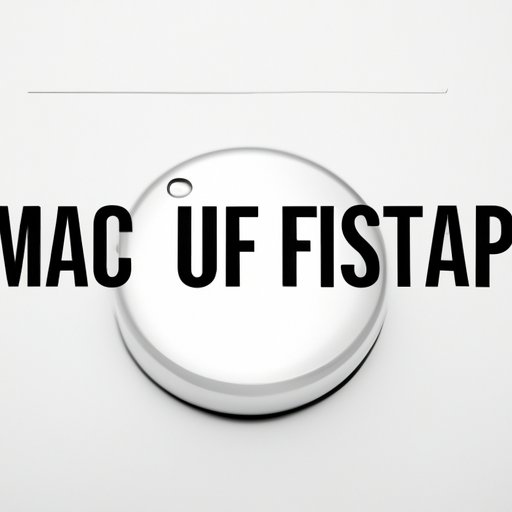I. Introduction
Running out of disk space on a Mac can be a frustrating experience, especially if you’re trying to download or save important files. Fortunately, there are several ways to free up space on your computer and optimize its performance. In this article, we’ll explore some tips and tricks for freeing up disk space on a Mac.
II. Use the built-in Disk Utility tool
Disk Utility is a built-in tool on Mac computers that can help you identify and remove unnecessary files. To use Disk Utility:
- Open a Finder window and click on “Applications” in the left sidebar.
- Scroll down until you see the “Utilities” folder and click on it.
- Double-click on “Disk Utility” to open it.
- Select your Mac’s hard drive on the left side of the window.
- Click on the “First Aid” tab at the top of the window.
- Click on “Run” to allow Disk Utility to scan and repair any issues with your hard drive.
III. Delete duplicate files using Gemini
Gemini is a powerful tool that can help you quickly identify and delete duplicate files on your computer. To use Gemini:
- Download and install Gemini from the Mac App Store.
- Open Gemini and select “Smart Cleanup” from the main menu.
- Click on “Scan for duplicates” to allow Gemini to scan your computer.
- Once the scan is complete, select the duplicates you want to remove and click on “Remove Selected Duplicates.”
IV. Move large files to an external hard drive or cloud storage service
If you have large files that you don’t need to access frequently, consider offloading them onto an external hard drive or using a cloud storage service like Dropbox or Google Drive. To move files to an external hard drive:
- Connect your external hard drive to your Mac.
- Open a Finder window and navigate to the files you want to move.
- Drag the files to your external hard drive.
- Once the files have finished copying, you can safely remove your external hard drive.
V. Uninstall unused applications using AppCleaner
Unused applications can take up a lot of space on your Mac. AppCleaner is a tool that can help you easily remove unused apps and their associated files. To use AppCleaner:
- Download and install AppCleaner from the developer’s website.
- Open AppCleaner and drag the application you want to uninstall into the AppCleaner window.
- Click on “Remove” to allow AppCleaner to uninstall the application and its associated files.
VI. Clear out old system backups and other files
Old system backups and other files can accumulate over time and take up valuable disk space. To clear out these files:
- Open a Finder window and click on “Go” in the menu bar at the top of the screen.
- Click on “Go to Folder.”
- Type “~/Library/Application Support/Time Machine” into the search box and press enter.
- Delete any old system backups that you no longer need.
- Repeat this process for other folders like “Downloads” or “Mail” that may contain unnecessary files.
VII. Use a storage optimization tool
Storage optimization tools like CleanMyMac or DaisyDisk can help you quickly identify and remove large and unnecessary files on your Mac. To use one of these tools:
- Download and install the tool of your choice from the developer’s website.
- Open the tool and allow it to scan your computer.
- Once the scan is complete, select the files you want to remove and click on “Clean.”
VIII. Conclusion
By using the tips and tricks outlined in this article, you can easily free up disk space on your Mac and optimize its performance. Whether you’re using built-in tools like Disk Utility or third-party apps like Gemini or CleanMyMac, there are plenty of ways to keep your Mac running smoothly and efficiently.
